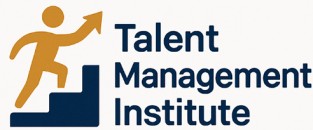
Understanding Inorganic Growth in Marketing
The Importance of Understanding Growth Mechanisms
In the realm of marketing, distinguishing between organic and inorganic growth is crucial for a comprehensive marketing strategy. Organic growth primarily revolves around building audience trust and engagement over time through valuable content and effective SEO strategies. This involves content creation, search engine optimization, and fostering connections on social media platforms.
In contrast, inorganic growth focuses on achieving rapid business expansion through paid ads and social media campaigns. Businesses leverage platforms like Google Ads and various social media networks to increase brand visibility and reach. Understanding the dynamics of these two growth mechanisms allows companies to strategize effectively, whether they aim for immediate results or a more sustainable long-term approach.
Both growth types play different roles in marketing and need to be balanced. While organic methods take time to show results, they build a solid foundation for an audience that trusts your brand. Meanwhile, inorganic growth strategies deliver faster results, driving immediate traffic and engagement, crucial for quick business needs.
The Role of Paid Advertising in Inorganic Growth
Utilizing Paid Advertising to Fuel Inorganic Growth
In the dynamic world of marketing, paid advertising has emerged as a pivotal component in driving inorganic growth. Distinct from organic growth, which relies heavily on strategies like SEO and organic content to gradually build a brand's presence, inorganic growth leverages the power of paid marketing strategies to achieve more immediate business expansion. Paid advertising, a cornerstone of inorganic marketing, involves investing in various digital marketing channels to quickly reach a broader audience. Platforms like Google Ads and social media networks offer targeted ads that can effectively boost brand visibility. This approach allows businesses to bypass traditional marketing hurdles, rapidly acquiring new customers and expanding their market share. A robust marketing strategy that incorporates paid advertising can help businesses achieve their growth goals efficiently. Here's how paid ads play a crucial role in driving inorganic growth:- Increased Reach and Visibility: Unlike organic strategies, which take time to build audience engagement, paid ads deliver immediate exposure to a vast number of potential customers.
- Targeted Advertising: Digital platforms provide tools to segment audiences based on demographics, interests, and behavior. This ensures that advertising efforts are highly focused, thereby increasing the chance of converting leads into customers.
- Measurable Outcomes: Paid advertising allows businesses to track performance metrics in real-time. Data-driven insights enable marketers to refine their strategies for optimal results, ensuring a higher return on investment.
Integrating Inorganic Growth Strategies with Talent Management
Aligning Talent Management with Advertising Efforts
Integrating inorganic growth strategies within the framework of talent management is crucial for any business seeking to capitalize on the power of paid advertising. While strategies for managing campaign logistics outline the mechanics of reach and visibility, it is the talent behind these endeavors that drives meaningful impact.
Paid advertising demands a blend of creativity and analytical skills to craft compelling content that resonates with the audience. This necessitates the recruitment and development of talent that is not only proficient in digital marketing but also adept at interpreting data from various platforms like social media and Google Ads. As the landscape evolves, businesses must ensure that their teams possess the agility to adapt to new trends and tools rapidly. This underscores the significance of integrating growth strategies with talent management.
Furthermore, involving talented professionals in the strategic decision-making process can lead to more robust marketing strategies. These professionals bring valuable insights into the effectiveness of paid ads and can suggest innovative ways to amplify brand awareness, thereby enhancing organic growth in the long term.
Linking Engagement and Growth
The synergy between content creation and audience engagement is another area where talent management plays an instrumental role. Creating valuable content for ads that boost engagement requires skilled professionals who understand both the brand's message and the intricacies of consumer behavior.
Businesses should foster a culture that encourages creativity within their marketing teams, allowing for the exploration of different advertising formats and organic marketing tactics aligned with their broader marketing strategy. This integrative approach not only supports the immediate objectives of inorganic marketing but also cultivates a foundation for sustainable growth strategy and overall business success.
For further insights on navigating employee enrollment and its importance in this context, exploring resources focused on talent management can offer valuable guidance. Aligning talent resources effectively with advertising endeavors is critical to maintaining a competitive edge in today's fast-paced business environment.
Challenges in Implementing Inorganic Growth Strategies
Tackling the Complexities of Executing Paid Marketing Campaigns
Implementing inorganic growth strategies, such as paid advertising in marketing, introduces distinct challenges that businesses need to manage effectively. The pivot from organic to inorganic marketing can bring about hurdles in determining the right balance between paid and organic approaches within the marketing strategy.
Firstly, businesses need to navigate the intricacies of choosing the right platforms for their audience. With myriad options like Google Ads, social media outlets, and other digital marketing channels, selecting where to allocate marketing efforts and finances is crucial. Establishing which platforms align with the brand's goals and target engagement can determine the success of paid ads and ultimately, inorganic growth strategies.
Additionally, content creation remains a cornerstone. Even in inorganic strategies, the emphasis is on crafting valuable content that resonates with the intended audience. Successful campaigns require a blend of tailored messaging that complements organic approaches while pushing the boundaries in advertising. This balance is essential to maintain credibility and long-term brand trust.
Paid marketing also involves time and resource commitments, as businesses need to analyze, monitor, and adjust campaigns in a dynamic landscape. As ads go live, constant evaluation is imperative to ensure they yield the desired return on investment (ROI) and achieve the anticipated growth in audience engagement. This ongoing process calls for adept marketing strategies and flexibility to adapt to ever-changing market conditions, ensuring that investments in paid advertising do not overshadow the benefits of organic growth.
A significant challenge lies in managing the metrics and data generated from paid marketing campaigns. Businesses need to employ comprehensive digital marketing tools to measure success accurately. Metrics such as click-through rates, conversion rates, and overall financial returns are pivotal in assessing whether inorganic marketing efforts are driving tangible business value.
Furthermore, aligning these strategies with the broader business objectives requires coordination across different departments. Integration of paid advertising efforts with organic marketing efforts ensures streamlined growth. This often necessitates clear communication and collaboration within teams to maintain a cohesive and unified brand message.
Case Studies: Success Stories of Inorganic Growth
Real World Examples of Successful Inorganic Growth
In the ever-evolving landscape of digital marketing, several businesses have harnessed the power of inorganic growth strategies to achieve remarkable success. Analyzing these case studies provides valuable insights into how paid advertising and strategic planning can lead to substantial brand development and expansion. One notable example is an emerging e-commerce platform that successfully leveraged paid ads on social media and search engines to exponentially increase its audience. By targeting specific demographics and employing advanced data analytics, the company was able to refine its marketing strategies, optimize advertising efforts, and achieve high engagement rates. This focused use of inorganic marketing helped the brand to expand its reach far beyond what organic growth mechanisms could typically accomplish. In another instance, a traditional retail business decided to revamp its marketing strategy by incorporating digital paid advertising across various platforms like Google Ads. By carefully selecting keywords and continuously optimizing ad content, the company saw significant improvements in customer acquisition and brand visibility. This strategic move not only complemented their organic marketing efforts but also ensured sustained long-term growth. These success stories highlight how businesses can effectively integrate inorganic growth strategies with their overall marketing plans. By balancing paid and organic marketing efforts, brands can diversify their reach and adapt to changing market dynamics. This balanced approach allows businesses to capitalize on new opportunities while building a solid foundation for sustained growth.Future Trends in Inorganic Growth and Talent Management
Emerging Directions in Marketing and Talent Management
The landscape of marketing is ever-evolving, with businesses constantly adapting to new trends and strategies to maintain and enhance growth. Recent advancements in technologies and preferences are paving the way for new directions in inorganic growth that can be seamlessly integrated with talent management.
As marketing strategies continue to favor automation and data-driven decisions, businesses increasingly rely on paid advertising and content creation. The use of platforms like Google Ads is expected to expand, providing opportunities for marketers to reach a wider audience effectively. By harnessing these tools, organizations can identify their target demographics more accurately and optimize their marketing spend, leading to more organic engagement in the long term.
Furthermore, the rise of social media as a primary marketing channel shows no signs of slowing down. Businesses that can effectively manage their social media presence will not only drive growth but also ensure that their brand resonates with the audience. Platforms such as these allow for instant feedback and engagement, which can be crucial in shaping marketing strategies that align more closely with customer expectations and preferences.
Integration of artificial intelligence and machine learning is also becoming prevalent in marketing strategies. These technologies facilitate predictive analytics, enabling businesses to foresee market trends and make informed decisions that align with their growth strategy. As these components become a staple in digital marketing initiatives, brands can expect to see advancements in tailoring personalized content and targeting the right audiences at the right time.
In terms of talent management, adapting to these future trends will require significant investment in training and development. Businesses need to ensure that their teams are equipped with the skills required to manage contemporary marketing tools and platforms, ensuring that their strategies are both innovative and competitive. As these dynamics unfold, the integration of inorganic growth strategies with talent development will be crucial to maintaining a sustainable business model.













